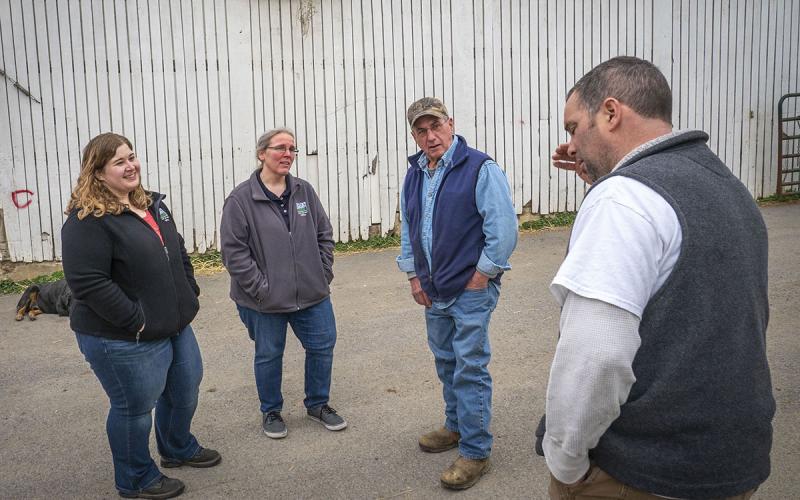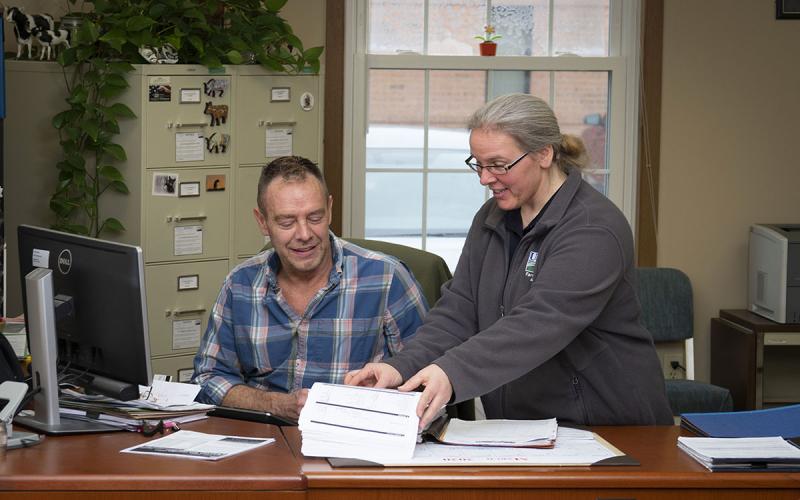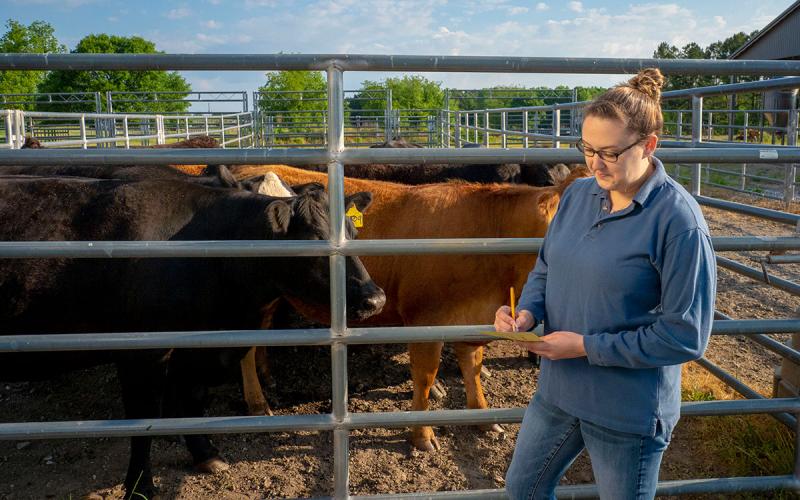Written by Addie Stamps, former SDSU Extension Livestock Production and Stewardship Field Specialist.
Natural disasters and disease outbreaks can strike at any time, but planning ahead keeps losses minimal and protects both our animals and livelihoods. For cattle producers, we can incorporate guidance and resources into a cohesive operation‑level emergency action plan.
Without a plan, cattle operations expose themselves to liability risks, animal welfare issues, consumer scrutiny, and increased recovery costs. A documented plan enables quick decision‑making, ensures continuity of care, and facilitates assistance requests.
Building Your Operation’s Disaster and Emergency Plan

Here’s a phased approach to developing or revising your on‑site plan.
1. Form your planning team & assess hazards
- Identify key collaborators: your farm manager/owner, herd veterinarian, trusted employees, neighbor producers, and local first responders or Extension personnel.
- Analyze likely threats: fire, flood, drought, extreme heat/cold, tornadoes, disease. Adopt an “all‑hazards” mindset but tailor to your geography.
- Define planning objectives: e.g. keep livestock fed/watered during utility outage, evacuate safely if needed, maintain records and source verification, and support recovery.
2. Draft operational procedures using BQA best practices
- Create a written emergency action plan (EAP) that includes:
- Operation name, PIN or official ID, physical address, owner/manager contact info.
- Important phone numbers: vet, Extension, emergency services, utilities, feed supplier.
- A site map showing pens, shelter, water sources, power, access routes.
- Animal identification protocols: ear tags, USDA tags, branding, or temporary spray paint in urgent conditions to aid tracking and recovery.
- Daily chore lists and replacement instructions (so a proxy caretaker can step in): feeding schedules, water checks, manure removal, medication dosing.
- Mortality management: plans for burial, composting, or disposal according to local regulations.
- Staffing and proxy training: identify backup caretakers, ensure they are familiar with operations through periodic walk‑throughs and practice drills.
3. Secure resources & backup systems
- Ensure backup water systems or stored water supply is available, especially critical during power outages.
- Maintain extra feed supply or agreements with suppliers for emergency delivery.
- Keep medical supplies on‑site: medication, first‑aid kits, veterinary protocols, with clear labeling and instructions.
- Build a disaster box including halters, ropes, identification photos, feed/hay, medications, documentation of animal inventory, and utilities info—store in an accessible trailer compartment or vehicle.
4. Communications, cooperation, and training.
- Share your plan with local responders and Extension offices. Establish relationships with county emergency management officials.
- Train staff and backups to carry out tasks safely under stress. Include protocols for low‑stress cattle handling after disasters.
5. Review, revise, and exercise the plan.
- Use LERP’s emphasis on evaluation: conduct simulations, tabletop exercises, or actual response assessments and revise your plan accordingly.
- Review after routine cow‑calf assessments or audits, which include emergency action plan presence and recordkeeping criteria.
- Update contact lists, resource inventories, and procedures annually or after any staffing change.
Tapping USDA Disaster Assistance Programs

When disaster strikes, financial and technical support can ease recovery—but only if you’re prepared and enrolled in qualifying programs.
Available USDA programs:
- Livestock Forage Disaster Program (LFP) offers compensation for grazing losses due to drought or fire.
- Livestock Indemnity Program (LIP) pays producers for livestock deaths exceeding normal mortality.
- Emergency Assistance for Livestock, Honeybees, and Farm‑Raised Fish (ELAP) covers losses not eligible for LFP or LIP, including disease, blizzard, wildfire, or related costs.
- The newest Emergency Livestock Relief Program (ELRP), created under the 2025 American Relief Act, automatically provides relief payments for feed costs associated with drought or wildfire if you already have an approved LFP application for 2023/2024.
To take advantage:
- Ensure you're enrolled in, or apply early for, qualifying programs.
- Keep accurate livestock inventory records and grazing damage documentation (photos, pasture assessments, herd ID).
- Retain herd records, treatment logs, vaccination history, Premise ID Number, and operation contacts.
Bringing It All Together
Cattle producers can minimize risk and maximize resilience. Having a written emergency action plan and routine exercise of the plan helps ensure animal welfare and business continuity. Awareness and enrollment in USDA programs provide critical financial support during or after a disaster. Your preparedness plan and record-keeping also support those claims.
In a world where weather extremes, disease threats, and utility failures are increasingly common, the producers best able to recover are those who have a plan. By following this combined planning approach, cattle operations can move beyond reactive firefighting to proactive management.


